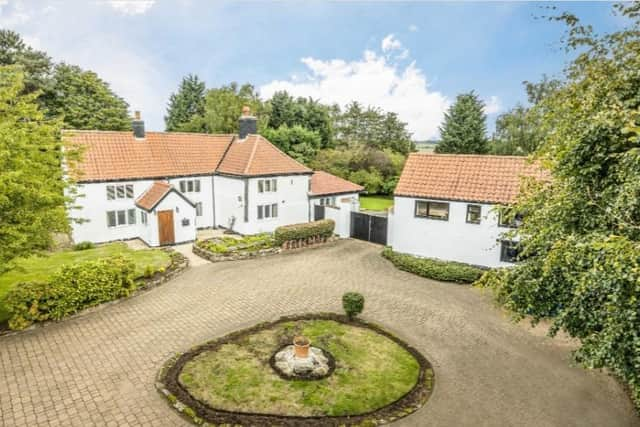The 16th-century Yorkshire manor house where Pilgrim Father and founder of New Plymouth colony William Bradford grew up is for sale
Americans still make pilgrimages to Manor House in Austerfield, near Doncaster, where William Bradford was born in 1590 and raised by his grandfather and uncles after his parents’ deaths when he was a young child.
Then the largest farm in the village, it was built in around 1500 and still has some of the original features.
Advertisement
Hide AdAdvertisement
Hide AdBradford fled religious constraints in England after forming friendships with other ‘Pilgrim Fathers’ from nearby villages on the Yorkshire-Nottinghamshire border, and he later became a founder and governor of the New Plymouth colony in Massachusetts after sailing on the famous Mayflower.


The house today has large grounds, three bedrooms plus a one-bedroom annexe, and is for sale with Fine and Country for £595,000. It is Grade II-listed.
The Bradford family owned land in Austerfield until the late 18th century. William was baptised in the local church, St Helena’s, but by the age of 18 had fled to Holland with the radical Brewster family, from nearby Scrooby.
In America, he was elected governor in 1621, was a signatory of the Mayflower Compact and wrote a journal about life in the ‘plantation’ which has become a valuable resource about the history of the period.
Advertisement
Hide AdAdvertisement
Hide AdThe open courtyard at Manor House still remains. It had stables and a coachman’s home, and the old village water pump is now in the courtyard. There are also the remains of an old pig trough.
By 1767, old maps show that the Bradfords no longer owned Manor House, and their names disappeared from parish registers soon after.
By the 19th century, the building had been divided into two cottages, but by the 1930s it was no longer occupied and was in a poor condition. Eventually it was condemned as unfit for human habitation and set to be demolished.
The US ambassador to London tried to save the house, and there was even talk that it would be transported and rebuilt in the States. Yet finances could not be raised.
Advertisement
Hide AdAdvertisement
Hide AdIn 1937, a visiting American pastor spotted builders at work in the grounds, but one was a woman of respectable family – Ethel Brown Pennington, the daughter of landowners in nearby Bawtry. She had seen the demolition crew on the site several months previously, and realising that its destruction was nigh, offered to buy Manor House.
Her work included removing small outlying buildings and later additions to the complex, and converting the stable into a caretaker’s cottage.
Her plan had been to turn Manor House into a museum-like heritage site, but World War Two put paid to her vision and she was forced to sell it as a private home. The purchaser in 1949 was a Lieutenant Colonel Forrest Bracewell, from Sheffield, who restored the building further and lived there until his death in the 1970s. Ethel Brown Pennington died in 1951, aged 50. A more recent owner was consultant Colin Vaughan Williams.
